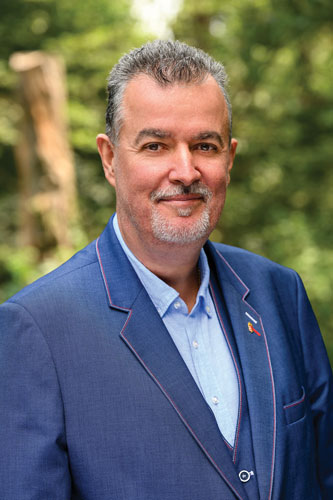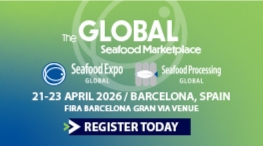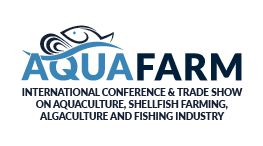This article was featured in Eurofish Magazine 5 2025.
Angling is politically, economically, and environmentally significant in Hungary. Recreational fishers are organised into a multitiered structure of associations, topped by a national federation, which carry out a range of activities directly and indirectly related to fishing.
Hungary is a nation of anglers. More than a million people are registered to fish, making angling one of the country’s largest mass-participation pastimes and a significant social institution. The national federation, MOHOSZ, describes itself as Hungary’s largest networked civil organisation, and its activities in recreation, tourism, nature protection, and data collection gives it unusual weight in public life.
A national federation with several roles
MOHOSZ is not a simple membership body. Through a 2019 government agreement it became a public task–performing organisation, assuming responsibility for 38 state functions tied to fisheries management and angling. In practical terms, MOHOSZ coordinates access to, and stewardship of, an extensive estate of state-owned natural waters. According to Dr István Dérer, director general of MOHOSZ, the federation oversees 140,000 hectares across 1,310 water bodies, a scale that is unusual in Europe. This role sits alongside responsibilities including competitive sport, youth education, university-level training for fishery managers, and restocking programmes that favour native species. The organisational system beneath the centre is three-tier and countrywide. As of the end of 2023 it comprised 25 regional member federations, 1,186 local angling associations, and 17 special-status members, together forming a wide network for governance and service delivery on the ground.
Angling is economically relevant well beyond the value of fish. The federation’s own analysis suggests that when a kilogram of fish is caught by an angler rather than bought, the total financial contribution to the economy – licences, tackle, bait, fuel, accommodation, etc. – can be roughly five times higher than the value of the fish. This is one reason MOHOSZ links angling policy to tourism, local services, and regional development. Public funding is part of the picture, but not the whole of it. Between 2014 and 2024 MOHOSZ received around HUF4.5 billion (EUR11.4 million) in budgetary support; over the same period, revenues from state angling permits surpassed HUF10.5 billion. The federation’s hybrid model of state tasks, income from fishing licences, and members’ contributions underpins stocking, monitoring, digital systems, and sport events that in turn drive participation and spending.
Inputs to policymaking
The Hungarian stretch of the Danube is undammed, yet upstream impoundments and retention in neighbouring countries reduce water flow in the river. The policy response in Hungary emphasises retaining water in the landscape and MOHOSZ engages directly with four ministries on these issues, feeding fisheries and angling interests into policy formation even though decisions rest with government. Water-scarcity compounds impacts of climate change such as drier seasons. Warmer conditions favour some predators such as European catfish, but other species face pressure from habitat alteration and winter conditions that, for instance, leave pike-perch more exposed to cormorant predation. These are not abstract trends; they show up in catch statistics, stocking choices, and the federation’s list of supported species developed with scientists to strengthen biodiversity in natural waters.
MOHOSZ’s stocking policy emphasises native species and ecosystem function. The federation is a major buyer of farmed fish for restocking, with about a third of the national aquaculture output, or roughly 6,500 tonnes per year, making it a critical market for pond farmers. The two parties, MOHOSZ and the farmers, hold discussions to maintain stability in fish prices and volumes. The ambition is to shift stocking gradually away from a carp-dominated profile, though angler preferences and the tradition of common carp consumption, keep demand high. Invasive aliens can be removed without limit, an approach that aligns angling practice with conservation objectives. Predator management is an area of practical cooperation. MOHOSZ supports non-lead-containing ammunition and controlled cormorant culling on fishponds and natural waters responding to estimates that recent cormorant consumption exceeded the total take by anglers on natural waters.
Digital transformation and compliance
One hallmark of MOHOSZ’s modernisation is its digital infrastructure. The HORINFO system underpins licensing and data, while the HORGÁSZ mobile app, launched in 2024, brings registration, the digital angling card, e-logbook functions, and online purchase of area tickets into a single interface. The app is integrated with horgaszjegy.hu, a MOHOSZ website to register anglers, so anglers log in with existing credentials rather than creating new accounts. Compliance is enforced by a large on-the-ground presence. Around 1,600 professional fish guards, supported by a similar number of volunteers, conduct licence checks, record infractions, and act as eyes and ears for water quality incidents. The federation equips many guards to take basic water measurements and to report rapidly to authorities when needed. Rules place personal responsibility on anglers for the cleanliness of their fishing spot, and local schemes such as a paid rubbish bag service around Lake Tisza contribute as well to the sanitation of fishing sites.
MOHOSZ runs school clubs and summer camps for thousands of children, framing angling as hands-on nature education that builds environmental literacy as well as skills. The federation also promotes fish consumption, arguing that wild or semi-wild fish from natural waters offer better meat quality than industrially farmed marine species. This nutrition message is now paired with a broader public campaign to raise domestic fish consumption, currently among the lowest in the EU, and to popularise the preparation of traditional and modern fish dishes.
Angling in Hungary is more than recreation. It is a mass civic activity that funds local environmental stewardship, teaches children about nature, shapes tourism choices, and supplies data that influence river and lake policy. The federation at its centre is part sports body, part nature service provider, part digital authority. Thanks to these different roles MOHOSZ serves Hungarian society in ways that angling federations in other countries can only dream of.









